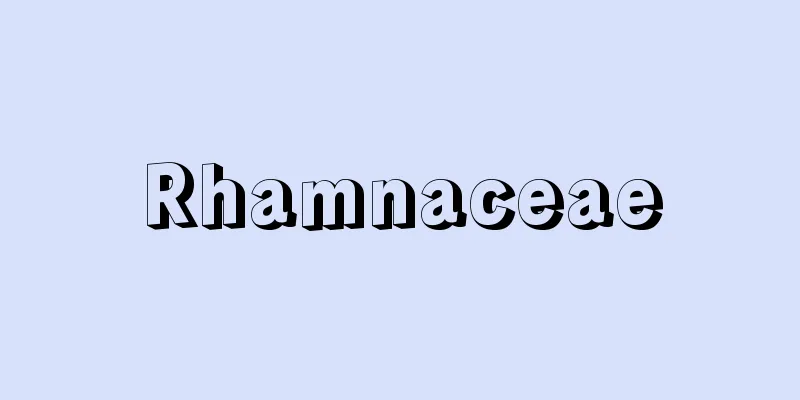Sextant - Rokubungi (English spelling) sextant

|
An instrument for measuring the altitude or angle of a target or celestial object. Accurately measuring the altitude of a celestial object allows the position of a ship in the ocean to be determined, so various altitude measuring instruments have been invented since ancient times, including the astrolabe, quadrant, cross staff, and back staff. Even after modern sextants with arc-shaped frames emerged, various instruments have been made depending on the size of the arc, such as quadrants, quintants, sextants, and octants, depending on what fraction of 360 degrees they can measure. The arc of a sextant can measure up to 120 degrees in real angle, so it is actually a tritant, but all angle measuring instruments of this type are called sextants. A sextant is composed of an index bar that moves around the center of the arc as a fulcrum, a movable mirror attached to it, a horizon mirror and a telescope fixed to a frame, and an angle scale engraved on the arc. To measure the altitude of a celestial object, first look at the horizon from one side of the horizon mirror through telescope T ( ). Then move the index bar so that the image of celestial object S reflected by movable mirror I and projected on horizon mirror H coincides with the horizon. The rotation angle of the index bar at this time, ∠AOB, is half the celestial object altitude ∠SEO', so if the scale on the arc is marked at twice the actual angle, the altitude of the celestial object can be measured. There is also a method of measuring the angle between two land targets whose positions are known using a sextant in the horizontal direction to determine the ship's position. The angle measurement error of a sextant is about 0.5 minutes. [Yukito Iijima] “Nautical Instruments” by Mitsugu Iseki and Kazutami Shoji (1950, Kaibundo) ▽ “Nautical Instruments” by Yukito Iijima and Shogo Hayashi (1986, Seizando Shoten) ▽ “Basic Nautical Instruments” by Yumio Yonezawa (1995, Seizando Shoten)” “Kazuo Taguchi and Masahiro Tabata, “Introduction to Marine Instrumentation Engineering” (1997, Seizando Shoten)” [Reference] | |©Takashi Aoki The structure of a sextant ©Shogakukan "> Principle of measuring angle with a sextant (Diagram) Source: Shogakukan Encyclopedia Nipponica About Encyclopedia Nipponica Information | Legend |
|
物標(目標となる物)または天体の高度や角度を測定する計器。天体の高度を正確に測定すれば大洋中の船の位置が決定できるので、古来からアストロラーベ、コードラント、クロススタッフ、バックスタッフなど、種々の高度測定器具が発明された。現在の六分儀のような円弧状の枠をもつ型式となってからも、弧の大きさによって四分儀、五分儀、六分儀、八分儀など、360度の何分の1の角度まで測定できるかによっていろいろな器具がつくられてきた。六分儀の弧は実角にして120度まで測定できるから、実際には三分儀だが、この形の測角器具をすべて六分儀とよんでいる。 六分儀は、弧の中心を支点として動くインデックスバー、これに取り付けられた動鏡、枠に固定された水平鏡と望遠鏡、弧上に刻まれた角度目盛りによって構成されている。天体の高度を測定するには、まず望遠鏡Tを通して水平鏡の片面から水平線を見る()。ついで、動鏡Iに反射して水平鏡Hに映る天体Sの像が水平線と一致するようにインデックスバーを動かす。このときのインデックスバーの回転角∠AOBは、天体高度∠SEO′の2分の1となるから、弧上の目盛りを実角の2倍に目盛っておけば天体の高度が測定できることになる。また、位置のわかっている陸上の二つの物標の角度を、六分儀を水平方向に用いて測定し船位を求める方法も行われている。六分儀の角度測定誤差は0.5分程度である。 [飯島幸人] 『伊関貢・庄司和民著『航海計器学』(1950・海文堂)』▽『飯島幸人・林尚吾著『航海計測』(1986・成山堂書店)』▽『米沢弓雄著『基礎航海計器』(1995・成山堂書店)』▽『田口一夫・田畑雅洋著『海洋計測工学概論』(1997・成山堂書店)』 [参照項目] | |©青木 隆"> 六分儀の構造 ©Shogakukan"> 六分儀の測角原理〔図〕 出典 小学館 日本大百科全書(ニッポニカ)日本大百科全書(ニッポニカ)について 情報 | 凡例 |
Recommend
pater
…Normally, for a genealogical relationship to tra...
Eutectic crystal
Also called a eutectic mixture. When a certain typ...
Palmiro Togliatti
1893-1964 Leader of the Italian Communist Party. H...
Sosogi Coast - Sosogi Coast
This coast is located in the center of the norther...
Superoxide - Hyperoxide
A compound that contains the superoxide ion O2- ....
Aschermittwoch
...The night before this is called the night of P...
Peristrophe japonica (English spelling) Peristrophejaponica
…[Hiroshi Terao]. … *Some of the terminology that...
Japanese tree frog (English name) Hyla japonica
A small tree frog (illustration) of the Hylidae fa...
Kamata family
The Suto (Mori) clan (Sudouji) of the Northern Fuj...
Kaga crest - Kagamon
〘Noun〙 A type of crest used on the haori coats of ...
"Wei Zhi Dong Yi Biography"
…The "Records of the Three Kingdoms" We...
Medical aircraft - medical aircraft
…Hospital ships were most active during World War...
Ryuichi Obitani
...But it was after World War II that the sport s...
Goral - Goral (English spelling)
A type of wild goat that lives on rocky mountain a...
Knights of Caltrava - Caltrava Knights of Caltrava
…In the Christian world, it refers to an organiza...









